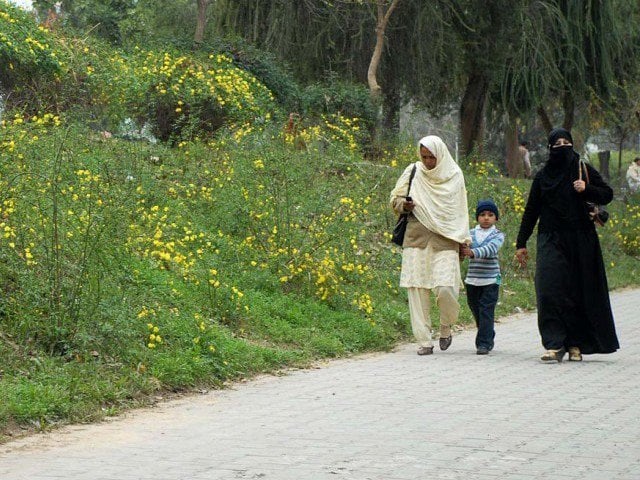
But as the days grow longer, the budding trees and blooming flowers are also bearers of an unwelcome reality: the start of the allergy season.
As climate change shortens springtime in Islamabad and makes it much less rainy, pollen allergy problems are skyrocketing.
District Health Officer Muhammad Najeeb Durrani estimates that more than 130,000 patients with pollen allergy symptoms registered this spring at Islamabad’s various health facilities. In previous years, the total was between 40,000 and 50,000, he said.
Climate change ministry set to get Rs815 million
The problem is particularly severe among elderly people and children, said officials at the Pakistan Institute of Medical Science (PIMS), the city’s main public hospital.
Aqeel Mustafa, who enters patient information at the hospital, said he had registered more than 600 pollen allergy patients a day since early March, and by the end of the first week of April the total had hit more than 25,000.
That is 65 per cent higher than last year’s registry, Mustafa told the Thomson Reuters Foundation, as patients queued up under a scorching sun at the hospital’s pollen allergy emergency centre.
Inside the ward, Aamir Aslam was struggling to breathe as a nurse placed a mask over his face to administer medication with a nebuliser.
“I have suffered such an acute allergic condition for the first time in my life. I thought I would not live anymore,” said the 35-year-old Pakistan Railways employee after he was brought to the hospital with dizziness, a sore throat and eyes, chest pain and difficulty breathing.
To deal with the crisis in allergy admissions, the city’s major government hospitals have allocated special beds, stocked medicines, and announced free diagnosis and treatment for allergy patients.
In March, health experts warned that Islamabad’s allergy suffers might have to cope with their symptoms for longer than usual as a result of climate change, which is reducing spring showers that normally wash pollen from the air.
Last month, the pollen count in Islamabad, a city of about 2 million people, hit more than 82,000 pollen grains per cubic metre of air (PPCM), up from a peak of more than 74,000 last year, according to the Pakistan Meteorological Department.
“This is a more than 55 times increase from the normal allowable limits under WHO (World Health Organization) standards,” said Dr. Waseem Khawaja, an allergy specialist at PIMS hospital.
Rains in the third week of March reduced levels to about 28,000 PPCM, but thousands are still suffering watery red eyes, runny noses, sneezing, coughing and breathlessness, doctors said.
The Pakistan Meteorological Department, which has been recording pollen counts since 2003, has seen the city’s spring levels rise steadily each year since 2010, as Islamabad’s springs become drier and shorter.
Ghulan Rasul, director general of the Pakistan Meteorological Department, said the city’s cool springs have given way to warm ones, most of them without good rain.
Both winter and spring are growing shorter as a result of climate change, he told the Thomson Reuters Foundation, with summer expanding from 150 to 180 days.
Analysing climate data : Scholars urged to understand GrADs
Temperatures from mid-February to mid-April used to remain between 10 and 20 degrees Celsius but now range from 20 to 30 degrees Celsius (68 to 86 degrees Fahrenheit), he said.
“The spring season was spread over 45 days but now it is no more than 10 days with a sharp decline in spring rains,” he said. That lack of rainfall, in particular, is “the main cause of the … pollen allergy situation in the capital city and adjoining areas.”
“The warming spring ahead, with temperatures reaching up to 30 degree Celsius and less rainy days in coming years, will provide an ideal environment” for more allergy problems, he said, something certain to increase “the country’s pollen allergy burden on the health budget”.








1732356840-0/Copy-of-Untitled-(1)1732356840-0-270x192.webp)








COMMENTS
Comments are moderated and generally will be posted if they are on-topic and not abusive.
For more information, please see our Comments FAQ